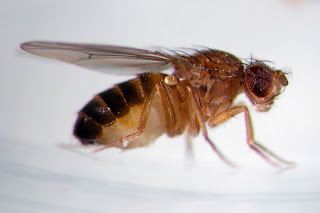True Wild Life | Fly | The fly is one of the most common and well-known insects in the world and the fly is found on every continent with the exception of the innermost polar regions of the Arctic Circle and Antarctica. There are more than 240,000 different species of fly worldwide but only around half of these have actually been scientifically documented, something the science world wants to look into further.
The insect fly includes bugs like the mosquito, a tiny fly found worldwide that feeds on animal blood. In this way the deadly disease of malaria continues to threaten the lives of those humans bitten by an infected mosquito. Flies and mosquitoes alike are known pests worldwide, generally connected with dirt, decay and disease as many species of fly are known to carry disease due to their ingestion of animal faeces, and connection with decaying bodies.
Flies are omnivorous animals and will eat almost anything from nectar of plants, to sap and even animal blood. The fly is able to prey on such things at it uncoils it's long, straw-like tongue which then sucks the liquid into the fly's body. The maggots which are the baby flies, are known to feet primarily on decomposing matter such as excrement and flesh. Due to it's small size and abundance, the fly is preyed upon by a wide variety of predators around the world including amphibians such as frogs, toads and newts, fish that eat flies that land on the surface of the water, reptiles such as lizards and small mammals.
Flies have an extremely short lifespan, only living for about a month. The female fly lays her eggs in decomposing material, both plants and animals, which hatch very quickly. The eggs hatch into fly larvae which are more commonly known as maggots and quickly transform into an adult fly. It is thought that the process from egg to fly takes just under 2 weeks.




1 comment:
gross
Post a Comment